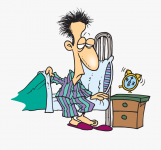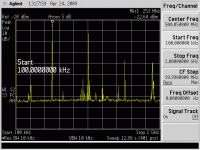Same as BMW are wallowly fat cars rather than the 'ultimate driving machine'.
I wouldn't call an M5 fat or wallowy.... 🙂
As always, debates in forums make little headway towards better mutual understanding. Getting together someplace and doing some experiments together is probably worth a try. Some interesting demonstrations are available to show and ponder over out here in Auburn 🙂
Do all amplifiers with < 5 ppm distortion measurements, sound alike? If not, what is the proper number of ppm's of distortion, at which they do all sound alike?
The Purifi is the latest and is more or less neck and neck with the Benchmark AHB2 on S/N and distortion measurements. If there is something that makes it 'sterile' that is not show in any measurements published yet. These two and the Ncore appear to be closest as you can get to wire with gain. I've not seen a credible argument as to why they are not better than most out there unless people actually like a sonic signature.
I'm not sure, if that is related to my post before, but I was asking as - according to the great debate - the performance level of "the latest" is completely unneeded perceptionwise.
If the argument before was that every amplifier with nonlinear distortion levels of 0.1% (all together) and linear distortion of 0.1dB (all together) in a bandwidth of 20 Hz to 20 kHz, is sufficient and audible transparent, obviously no amp with better specs could give an advantage, i.e. more transparent than transparent isn't possible.
course High end is more about pride of ownership than sound quality these days . Same as BMW are wallowly fat cars rather than the 'ultimate driving machine'. Look and feel sells more than sound quality IMO.
Not sure about that; obviously luxury items have always attracted different people for different reasons, so therefore I don't know if it is already different than before.
But we can take for granted that really good marketing sells better than a good product properties alone regardless of the industry/branch.
Last edited:
.......best sound and best accuracy are not mutually exclusive. That is where a lot of people have difficulty.😉 There are no absolutes, if you believe so ................
Jam
Jam
Attachments
Last edited:
Do all amplifiers with < 5 ppm distortion measurements, sound alike? If not, what is the proper number of ppm's of distortion, at which they do all sound alike?
A problem is: Some humans can be very sensitive to harmonic distortion, some types of linear distortion, and some types of distortion that are harder to pin down (say, fairly non-stationary harmonic distortion that looks more like noise on an FFT analyzed over a longer sample time period> think DACs, for example).
Until we get to the point that we are really good at measuring everything humans can hear, how can acceptable performance numbers be determined?
Do all amplifiers with < 5 ppm distortion measurements, sound alike? If not, what is the proper number of ppm's of distortion, at which they do all sound alike?
If they actually can do that into a loudspeaker, never clip, have no nonlinear transient behavior, have the same source impedance across the entire bandwidth, have the same bandwidth etc. Then they probably do.
A fun experiment is to place a 1 ohm resistor in series with one of a stereo pair of loudspeakers, adjusting the balance control for equal midrange volume. Then just listen to a mono source.
Last edited:
I think a null test would be more suitable to determine that. Distortion number would not show other factors such as damping factor, gain linearity, ULGF or phase shift.Do all amplifiers with < 5 ppm distortion measurements, sound alike? If not, what is the proper number of ppm's of distortion, at which they do all sound alike?
BTW: didn't we discuss that pole-zero cancellation technique circuit many years ago at another place?
The place shut down before we finished the discussion, but it was an interesting brainstormer.
(BTW. Dadod was a "member" at that place, he did't contribute much, but asked for help all the time.)
Stein
I never ashamed to ask a question and learn, I remember that forum too, pity it was closed.🙁
Regarding 200W CFA it needs some explanation. I designed it for my use and it was never intended to go commercial. Richard asked me and I sent two prototyped channels to him, and story started there.
I tested it ( on the bench not only simulation) with different capacitive loads from 1nF and up to 2uF and it was stable with no hint of instability. Test of clipping showed some small sticking but not to much and as it was for DIY it looks OK for me. I decided not to integrate any protection into the amp, instead designed a PS regulator with needed protection, overcurrent, voltage turn off simultaneously if one polarity drops to much, DC loudspeaker protection by instantaneous switch off the PS regulator output. That was good enough for DIY not sure about commercial amplifier.
I designed and built 100W version as I don’t need more powerful for myself. That amp is in use for several years to drive ordinary passive loudspeakers, and two three channels amps to drive Orion loudspeakers, all with dedicated PS regulators. Now interesting part I noticed during use. Sometimes the protection was triggered during switch on the preamplifier (I used different ones not all with the same effect) if the preamp was switched on after power amp. Same time may happen if input cable connected on wile the amp was powered. So I switch on the power amp last now with all inputs connected.
I think that same fast transients at preamp switch on triggered the PS regulator DC loudspeaker protection. Could be some instability at the power amp overload, as there not Backer clamp in it (maybe some low capacitance diode between VAS base and collector could help??
Now why the 200W CFA amp in Thailand blows output mosfets is not clear for me, but I’m sure is not because of to high ULGF. That amp was not designed to drive to low impedance, I tested it with 7.5 and 3.75 ohm not lower.
During construction of this amp in Thailand I never received any feedback or question, and did'nt have any control of its build, so no clue what was going on. I don’t know if they used any kind of protection, quite sure my PS regulator was not used.
dadod,
Thanks, that answers a lot of questions, about Richards version of the amplifier...🙂
Thanks, that answers a lot of questions, about Richards version of the amplifier...🙂
Last edited:
Bose is not in the running for High-End discussion.
-RM
Many audio lovers that I know, think Bose is not a high-end product. It is just an overpriced American product.
Its a nice DIY project for some people. 🙂
The F5 might be accurate enough. Looks good on paper.
-Richard
F5 must be improve at the high frequency quality.
Test of clipping showed some small sticking but not to much and as it was for DIY it looks OK for me
(...)
Now interesting part I noticed during use. Sometimes the protection was triggered during switch on the preamplifier (I used different ones not all with the same effect) if the preamp was switched on after power amp. Same time may happen if input cable connected on wile the amp was powered.
Now that you mention it, from my experience there is a rather simple explanation for the amplifier blow; it is still related to the stability.
Any high ULGF amplifier with two or more poles in the compensation is always only conditional stable. This means there are closed loop gains at which the amplifier is not stable (or dangerously close to the stability limit, those gains at which the phase reaches 180 degrees). This is usually not a problem when the solid state amplifier powers on or powers off, since in the process of setting up the amplifier bias such transitions are usually happening when the power supply is not yet at a level (voltage, current capability) in which it could permanently damage the amplifier. As a side note, oscillations when powering up/down are pretty common in ultra linear tube amps employing feedback, since the process to set up the normal operation takes seconds or even minutes, while the tubes heat up.
Now, clipping occurs when at least one stage (usually in the VAS) open loop gain collapses due to the device(s) entering saturation. It is the recovery from saturation (evacuating the stored excess base charge) that gives the ugly sticking aspect of the output waveform. As such, when a gain stage open loop gain collapses, the amplifier may enter into a situation where the feedback loop is no longer stable. Since the power supply is now at full capacity, and since the saturation recovery is not fast, it could be that the oscillations are strong enough to throw the output devices over the SOA (but last short enough to be hard to catch on a scope).
The common clipping protection (a Baker clamp) may or may not help; a Baker clamp is in general only a band aid, since it barely avoid the amplifier gain stages gain to collapse when clipping occurs, it mostly helps speeding up the recovery; the correct solution is to implement an active circuit that detects when clipping is about to happen, and effectively (and controlled) kills the global amplifier open loop gain, and make the remaining loop gain unconditionally stable in the process. Since such a circuit is essentially working in a non linear region, it is hard to design, simulate and tweak. It is essentially a non linear feedback loop (that also needs compensation to avoid it's own possible oscillations).
You can find some clues on how to implement such a gain killing clipping protection on my web site, but be aware it is not an universal plug and play solution so I can't endorse it for any other particular amplifier. Nevertheless, if such a protection is correctly implemented, the results are spectacular. In a 200W amplier I was able to apply 10Vpeak of input signal (the nominal level being 1.4Vpeak) and the output was not even close to showing any form of sticking to the rails - it was almost a perfect square wave.
Probably important to add: due to the poor saturation modelling in the Spice standard models, and the anyway shaky device models everybody is using, reliably simulating such a circuit is almost impossible; it needs a considerable amount of practical trial and error approach...
Why don't we see such circuitry in regular commercial amplifiers? Simply because (yet again) they don't push the ULGF and the loop gain to dangerous limits, they don't employ conditionally stable feedback loops (are usually single pole Miller compensated) and they do not claim pushing the distortion performance at record levels.
This is all tiny detail "geekery" and that division will never be accurate or precise as long as humans are involved and has a say.
This doesn't mean that its not fun and interesting... I think it is!
//
I agree entirely. We shouldn't forget that, by and large, audio toys are luxury goods. Everyone wants to think they're making some sort of extremely well reasoned purchase/design decision when it's liable to be hugely arbitrary/influenced by so many non-audio things, at least for audio electronics. 95% of the arguments here are, in essence, "my perception is more right than your perception". Do I need to go into the logical fallacy there?
Super subtle differences, which should be taken with a lot of salt (human SNR is terrible and there's no rigor to actually tease the data out), are also by definition super subtle. If that matters to you, great, but we have to make our own value judgments.
Gross changes and obviously things like speakers and rooms and such make sense. I get in a "fight" with my mom every time I come home and help cook as I like putting a lot more spices in the mix. Viva l'difference. We all have different motivations for being here: mine similar to Bill's. I like music, I like building things, I don't necessarily think the things I like making give some sort of major audible improvement, but certainly psychological one (because I had fun making the thing).
Now interesting part I noticed during use. Sometimes the protection was triggered during switch on the preamplifier (I used different ones not all with the same effect) if the preamp was switched on after power amp. Same time may happen if input cable connected on wile the amp was powered. So I switch on the power amp last now with all inputs connected.
Now that you mention it, from my experience there is a rather simple explanation for the amplifier blow; it is still related to the stability.
I had similar troubles as described by Damir in one of my very fast (too fast) preamps, switch on or connecting the RCA cable triggered SOMETHING (but say only once from 20 attempts), that I discovered only after I used a GHz spectrum analyzer (attached). 253 MHz oscillations triggered as described. So I agree with Ovidiu. Richard has numerous measuring instruments so they should be used next time, for evaluation and torture tests.
Attachments
You can listen only to speakers. As for the rest of components prior to speakers in audio chain, you study the measurements.As Matt put it, it is different but how do we know it is better?
Did someone here complain about it?Those are just personal value judgments to which no one here should complain.
Sound like you have a lot of experience with this business.As for a successful audio product, one does not have to please millions of people to sell millions of product. You only have to please 1-2 people. The magazine reviewer. thats all and sales will grow from that.
A so-so or bad review will seldom result in large/increased sales.
How do you get a good review? Its multi-faceted but basically you pander to the listening bias of the reviewer. If he/she has always liked the effect of distortion of amps with high 2H, then you tweek yours for a little 2H. ETC.
if you design for high accuracy instead, you are better off having someone like Robert Green evaluate it for sound quality. ETC.
You get my point. It is no different than a job where you please your boss and you get a raise. If you dont please your boss, well, you know how that ends.
Now, it should not be assumed a good review means a great product necessarily. I have to hear from many different magazines and reviewers and if they all thnk it is great then maybe it truly is great. Products which get good reviews from same magazine over and over is suspect that bias is playing a role.
Until we get to the point that we are really good at measuring everything humans can hear, how can acceptable performance numbers be determined?
We already have. Better question is, what soundwave can people hear that cannot be measured? I've been asking this for many months with no answer, even from those who are in audio business.
I never meet him, but Papa Nelson looks like a gentleman, a nice fellow and a beautiful freak.
A comics hero with little hearts in each "bubbles" .
Maybe Mr. Natural. I have total respect for Nelson and try to support the First Watt ideas when ever I can but I thought those speakers sounded like s**t to me.
- Status
- Not open for further replies.
- Home
- Member Areas
- The Lounge
- John Curl's Blowtorch preamplifier part III


